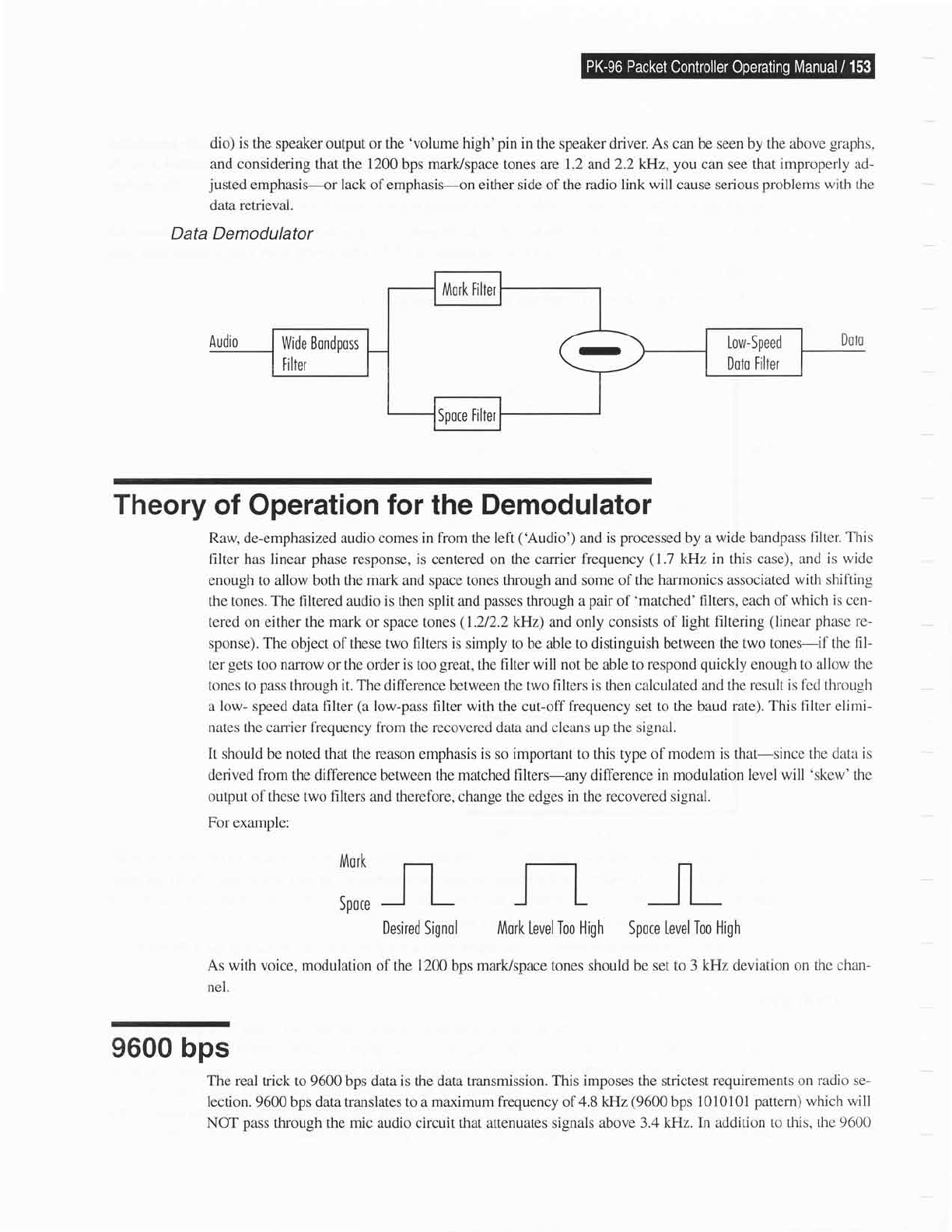Specifications
Table Of Contents

dio) is
the speaker output or the
'volume
high'pin in
the speaker driver. As can be seen
by
the
above
graphs,
and considering that the 1200 bps mark/space tones are 1.2 and2.2 kHz,
you
can see that improperly
ad-
justed
emphasis-or
lack
of
emph4sfs-6n
either
side
of
the radio link will cause serious
problems with
the
data retrieval.
Data Demodulator
Theory
of
Operation
for the
Demodulator
Raw,
de-emphasized audio comes in
from
the
left
('Audio')
and is
processed
by a
wide
bandpass
fllter.
This
filter has linear
phase
response, is centered on the carrier frequency
(1.7
kHz in this case), and
is widc
enor.rgh to allow both the
mark
and space
tones through and some of the harmonics
associated with shifting
the tones. The filtered audio is then split and
passes
through a
pair
of
'matched' filters, each of
which is cen-
tered on either the mark
or
space tones
(1.212.2
kHz) and only consists of
light filtering
(linear
phase
re-
sponse). The object of these
two
filters is
simply to be able to distinguish
between the two tones-if the
fil-
ter
gets
too narrow or the
order
is too
great,
the filter will not be able to respond
quickly
enough to allow
the
tones to
pass
through
it.
The difference between the two filters
is
then calculated
and the result
is lbd
throLrgh
a low- speed data filter
(a
low-pass filter with the cut-off frequency set to the baud
rate). This fllter elirni-
nates the
canier
liequency fiom
the
recovered
data and cleans
up the signal.
It should be noted
that the
reason
emphasis
is
so
important
to this
type
of
modem is that-since the data
is
derived from
the
difference
between the
matched filters-any
difference
in modulation level will
'skew'
the
output of these two filters and therefore, change the edges in the recovered signal.
For
example:
,,l
-n
t--t
-l-
Desired
Signol
Mork
Level
Too High
Spoce
Level Too High
As
with voice, modulation of the 1200 bps mark/space tones should be set to 3
kHz deviation on the
chan-
nel.
The real trick
to 9600 bps data
is
the data transmission.
This imposes the strictest requirements
on radio se-
lection.
9600 bps data translates to a maximum frequency of
4.8 kHz
(9600
bps 1010101
pattern) which
will
NOT pass
through the mic audio circuit that attenuates signals above 3.4
kHz. In addition to this, the 9600
9600 bps










